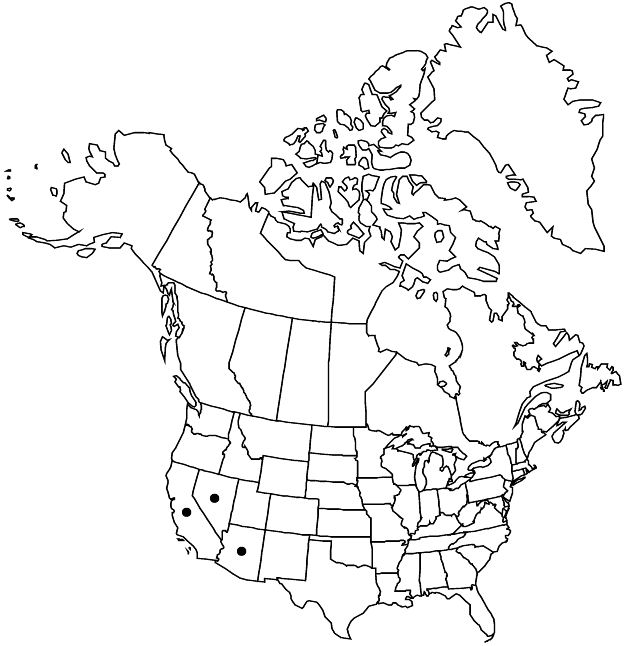Euphorbia polycarpa
Bot. Voy. Sulphur, 50. 1844.
Euphorbia polycarpa a highly variable species distributed throughout the Baja California peninsula, eastern Sonora, and the arid southwestern United States from southwestern Arizona to southern Nevada and central California. L. C. Wheeler (1941) divided the species into seven varieties, the majority of which occur in Baja California Sur. He reported two of these for the United States: var. hirtella and var. polycarpa. Variety hirtella, as the name suggests, applied to hairy plants. However, it here treated as a synonym of var. polycarpa, because variation in pubescence shows no geographic segregation and ranges along a continuum from glabrous or sparsely to densely hairy, and because glabrous and hairy branches can occur on the same individual.
Distribution

Ariz., Calif., Nev., nw Mexico
Discussion
Varieties 5 (1 in the flora).
Some of the varieties occurring in Mexico are highly divergent and appear to be sufficiently distinct to merit recognition as species. However, within the flora area, Euphorbia polycarpa is relatively uniform, and the only noteworthy variation involves the size of the involucral gland appendages. In the portion of the California Floristic Province occupied by E. polycarpa (Los Angeles, Orange, western Riverside, western San Diego, and Ventura counties) the appendages are conspicuously larger than those of plants throughout the remainder of its range in the southwestern United States (0.4–1.2 versus 0.1–0.3 mm). Large-appendaged plants are also common in Baja California and correspond well with the type collection. The taxonomic significance of this variation is not clear at this time, and the small-appendaged plants may merit segregation as an infraspecific taxon. However, no formal changes are proposed, awaiting a comprehensive review of the species throughout its range.
Selected References
None.
Lower Taxa
"connate" is not a number. "distinct" is not a number."connate" is not a number. "distinct" is not a number.